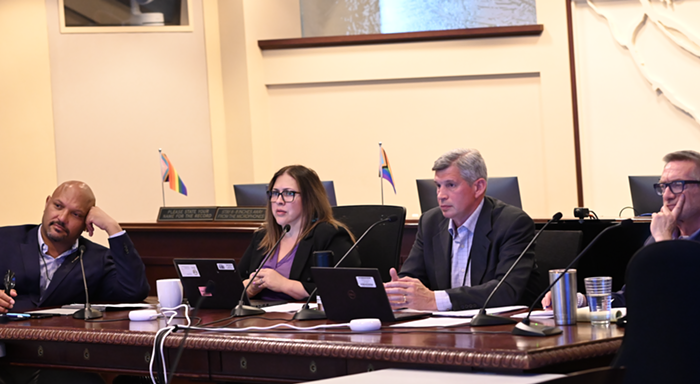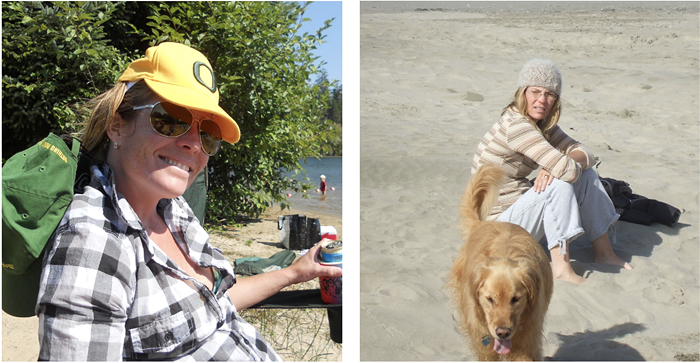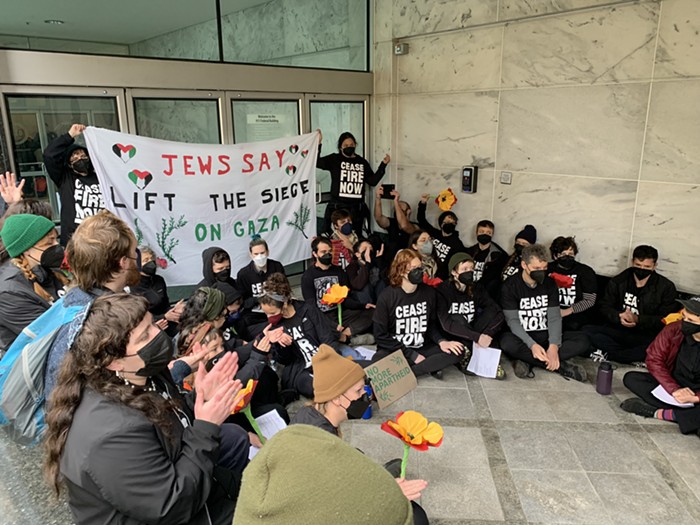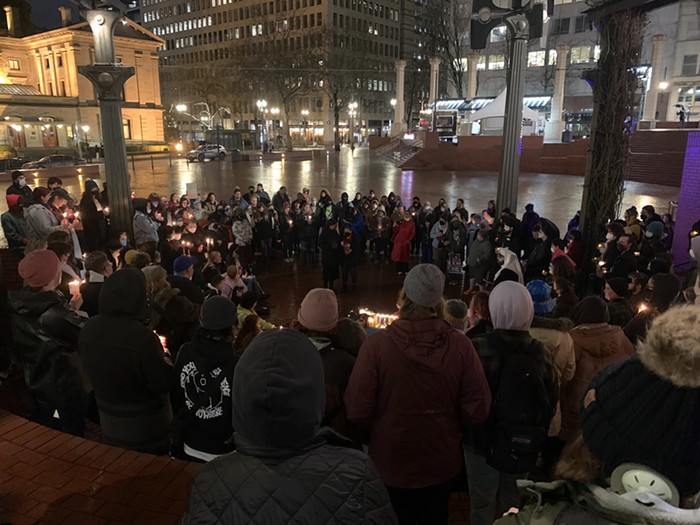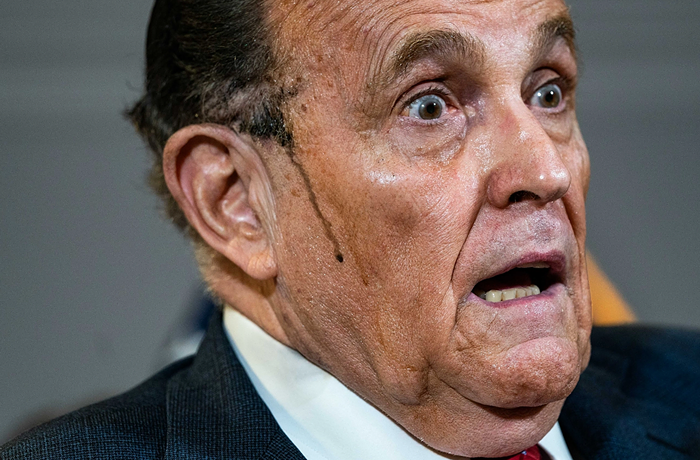"I'VE HAD TWO HEART ATTACKS this year. I'm in alcoholic withdrawal. I have seizures, I have hypertension, I'm on about 12 different medications. I shouldn't even be smoking right now, to tell you the truth," said Lewis Goescht, smoking a cigarette outside the Portland Rescue Mission on W Burnside. It's just before dawn on Wednesday, October 22.
Goescht was one of 646 homeless people surveyed about their health over three days last week, by a team of nearly 70 volunteers working in collaboration with the city's Bureau of Housing and Community Development (BHCD) and the New York-based nonprofit Common Ground. Common Ground has a new "Vulnerability Index" survey, which is being conducted in six cities across the country, including Portland.
The Vulnerability Index relies on research by a Boston organization identifying seven medical indicators like HIV, cirrhosis, and kidney disease that cause afflicted homeless people to have a 40 percent chance of dying over the next seven years.
Later last Wednesday, Common Ground's Director of Innovation Becky Kanis showed the Mercury a photograph of 11 homeless people taken in New York in 2000. Each of them has one of the seven medical indicators. "Only three are still alive," she said.
The city's new housing commissioner, Nick Fish, told an audience at the Portland Building last Friday, October 24, that he was proud of the survey, "even as I am troubled by what we have learned. Frankly the results shock me."
Portland's homeless population is markedly sicker than the others surveyed so far by Common Ground. Of the 646 homeless people surveyed in 13 sectors close to the city's downtown core, 47 percent had one of the seven dangerous conditions, compared to an average of 42 percent among the other cities surveyed. Most significantly, Portland's rate of tri-morbidity—where a person has co-occurring psychiatric, substance abuse, and chronic medical conditions—is 36 percent, compared to an average of 22 percent in the other cities surveyed.
Liora Berry of BHCD suggested the federal slashing of the Oregon Health Plan—132,000 poor Oregonians were insured on the plan in 1995, and just 19,000 are now—could be partly to blame. Sixty-three percent of those surveyed were uninsured. The survey also uncovered 45 medically vulnerable veterans, and 23 people under 25 with injection drug habits, daily alcohol use, or HIV infection—significant risk factors for morbidity among homeless youth.
The worst case surveyed was a 63-year-old Hispanic woman who has been on the streets 10 years, with liver disease, kidney disease, heart problems, a history of frostbite, who had been the victim of violent attacks since becoming homeless, and who has no income or health insurance.
Commissioner Fish responded to the data by asking BHCD Homeless Program Manager Sally Erickson to come up with "a plan" by next Monday, November 3. Fish says he'll also work with the county to consider opening two new warming centers in the winter months, for $200,000 each. Erickson has already set aside 50 winter shelter beds for people with the most pressing health problems, and plans to use 70 veterans' vouchers from the Federal Department of Housing and Urban Development to target the vulnerable veterans.
But with no extra federal funding on the immediate horizon, the impact of the survey on the city's housing policy is potentially much further reaching, controversially changing the way people get to the top of housing waiting lists, for example.
Goescht, who is on the city's list for housing at a nearby shelter, was at first reluctant to fill out a survey. But volunteers explained that his answers could help his chances of getting into housing sooner, so he changed his mind. When he was done, the volunteers took his picture, and handed over a $5 Safeway card for his time.
Nevertheless, Erickson is resolute about the imperative implicit in the data.
"At the moment, people are getting housed because they are able to elbow themselves to the front of the line," Erickson told the Mercury. "We're going to ask the question borne out of the Vulnerability Index, which is how we become smarter with our resources so we can save some lives."

